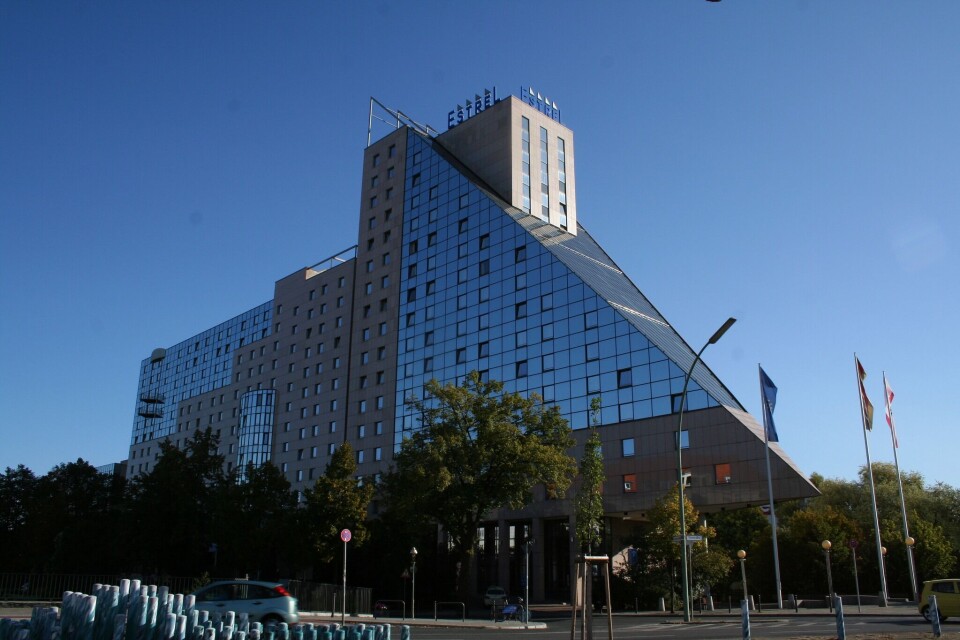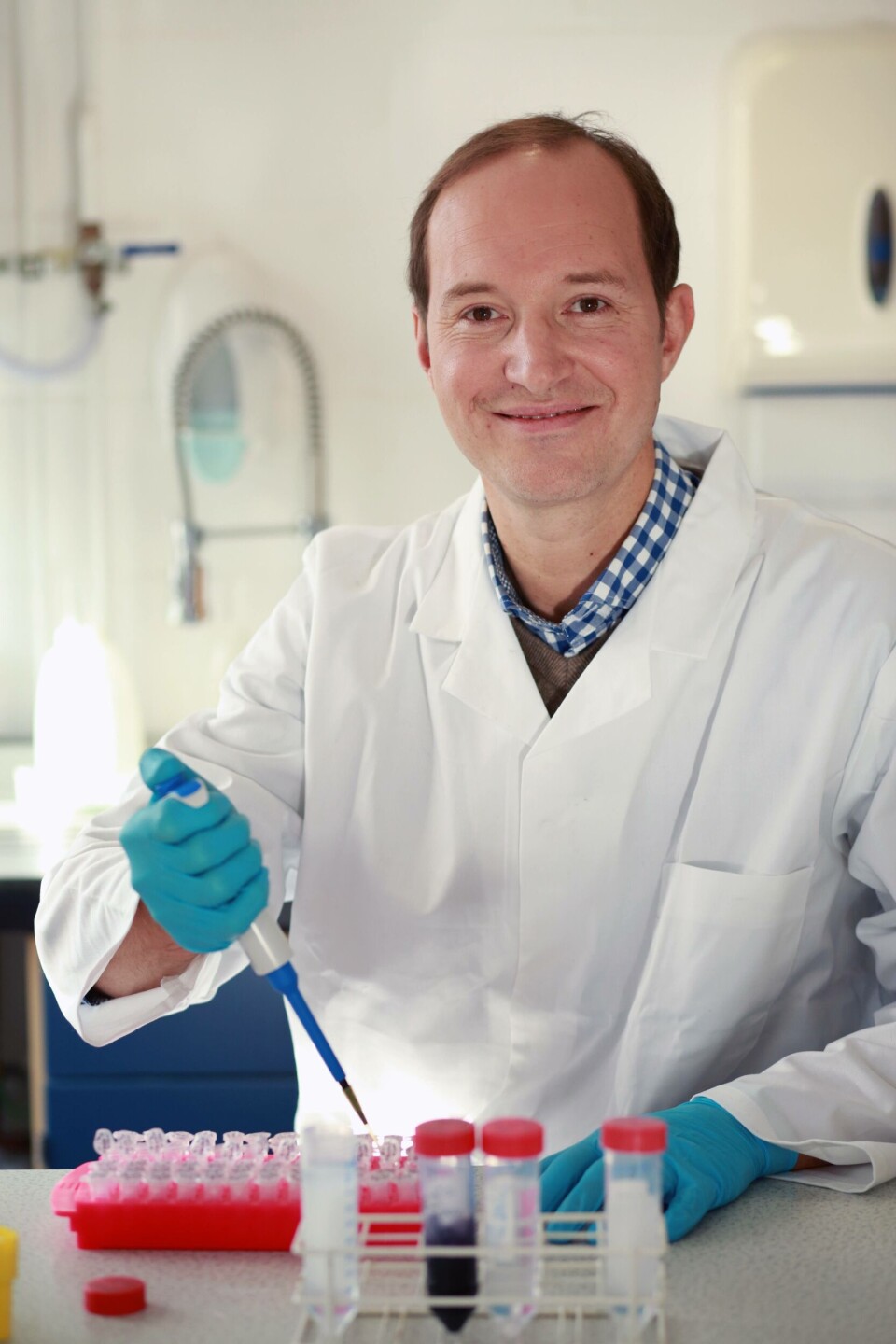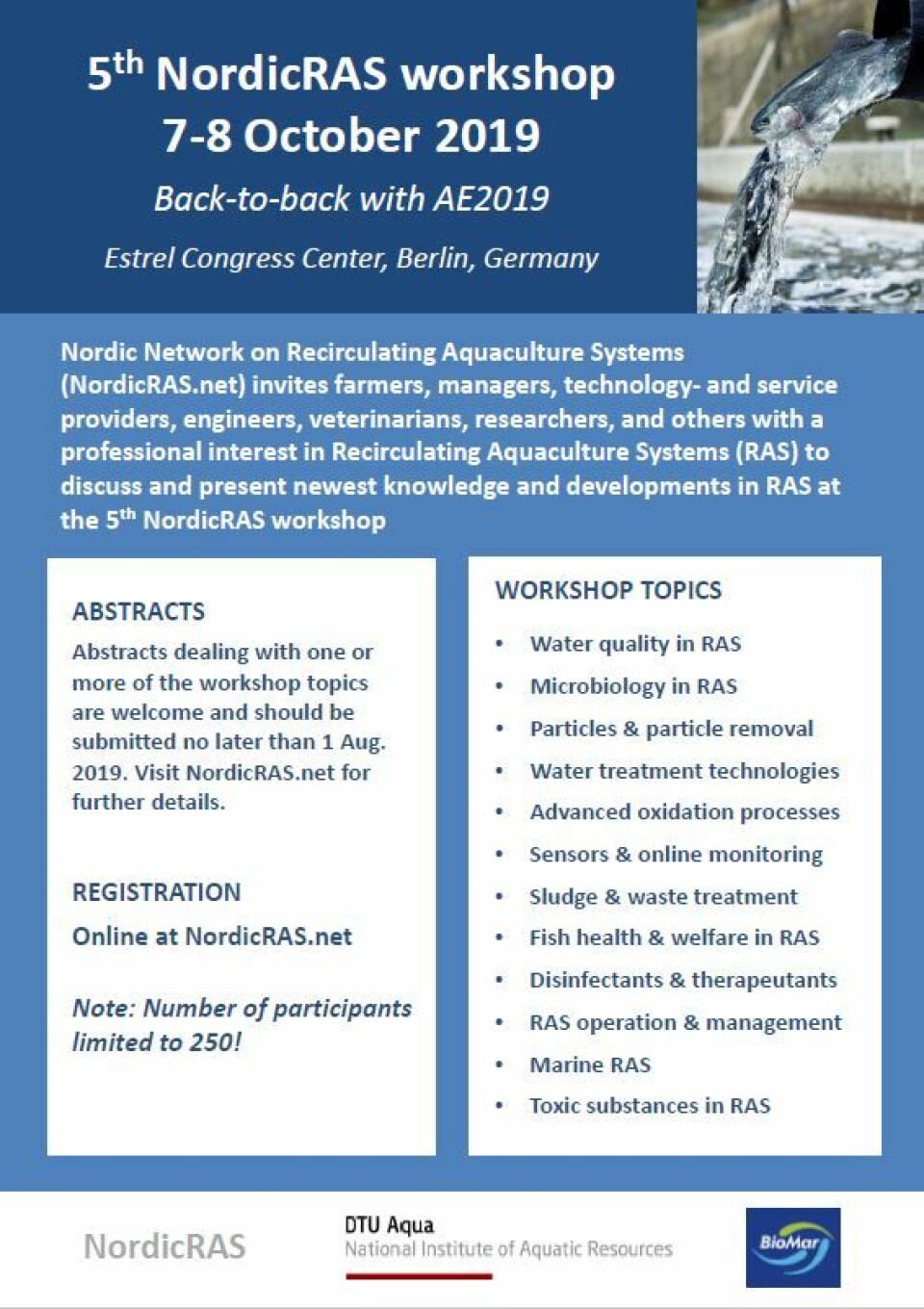
A massive meeting of minds
A record number of academics have applied to speak at the Aquaculture Europe 2019 event in Berlin next week, and the number of researchers wanting to display posters has also reached a new high. European Aquaculture Society president-elect Herve Migaud is anticipating a capital week in Germany.
A few weeks ago, the European Aquaculture Society (EAS) announced that it had a record number of 880 abstracts from academics eager to present at Aquaculture Europe 2019 from October 7-10. That figure has since reached 1,000.
Inevitably, some applicants will be disappointed, although the EAS has been doing its best to squeeze speakers in.

‘Suffering from success’
“We’ve got 1,000 abstracts, which is creating quite a big issue for the organising committee. It is a massive job,” says Professor Herve Migaud, the former head of the University of Stirling’s Institute of Aquaculture.
“We are going to have 55 different sessions over the three days, which is enormous, and between 400 and 450 oral presentations, so it’s very large.
“The organising committee is working very hard to try to accommodate as many as possible. We have been creating new rooms and new sessions: we are suffering from the success of the EAS.”
Interactive posters
As well as oral presentations, Aquaculture Europe will have 300 academic posters chosen from 500 applications. Around 100 of the posters will be interactive e-posters that appear on video screens, the first time the EAS has used such technology.
“We are testing it in Berlin and then we are hoping to integrate it fully, or to a larger extent at Aquaculture Europe 2020 in Cork,” explains Migaud.
“We are partnering with a specialist who has been organising this at a lot of different events. You have a number of interactive tools that can be used. We want to see how the audience at the EAS event responds to this. I think it’s going to be very good.”
Direct feedback
The e-posters are one way that the EAS can help meet increasing demand from academics at various stages of their career.
“We have an increasing number of people who want to present, and we want to make sure that the posters are also very useful, that a poster is not just stuck on a wall somewhere but that we can do something a bit better with it. By being interactive you can add different types of content and you can also have direct feedback, just by pressing on it,” says Migaud.
“Making it more interactive is really the point. Everybody wants to present - it makes sense, especially if you are travelling sometimes quite far. It’s also related to funding, so you really want your opportunity to present your results in front of the audience. But it’s impossible to have 1,000 people presenting.”
Good learning exercise
Presenting posters also allows people whose research is at a preliminary stage to show what they’re doing, without having to present full results.
And they can be a useful introduction to public presentation.
“Sometimes you have PhD students and it’s the first time they’ve come to a conference – and we’re welcoming this a lot at the EAS – and they’re not always ready to stand up and present in front of people. So, it’s a good learning exercise to start with a poster,” says Migaud.
Migaud has no doubt about the value of the EAS event to academics, but also to industry.
“It is unique as an event, because it’s really bringing the two sides of aquaculture – the academic side, the research, a lot of which is in cooperation with the industry - and the trade show, the companies. We have around 150 companies that are going to be there with booths. We could have had way more, but we were limited by footprint. Companies are coming year on year on year and are very loyal.”
The event provides a great opportunity for networking between industry and academia, he says.
Industry-specific sessions
“The industry can see the new innovation and the academics can also see what the industry is doing in relation to challenges, and the new products coming in.
“Very often you have conferences that are either academic or industry-based, like a trade show, and it’s the combination of the two that makes a successful show of the EAS. Bringing these two different communities together can be challenging because the aim is not to have two events in one, it is to have one event, so we really want a lot of mix between industry and academia.
“For the trade show we are organising a lot of events within the industry, so there are a number of sessions that are really industry-specific that the academics can also go to if they wish.”
Innovation forum
This year’s event includes a new day-long Aquaculture Europe Innovation Forum, in conjunction with the aquaculture accelerator fund, Hatch.
“We’ve been very keen to do this for a while, but we couldn’t find a way to do it,” says Migaud. “This time we’ve put a lot of effort into it. It is really trying to support new businesses, start-ups. Some of them are at a really early stage of development, some are more advanced.
“We have some very senior people from the industry and also from different organisations, from government and academia.”

Hot topic
Recirculating aquaculture systems also feature prominently this year. A separate Nordic RAS workshop organised in conjunction with the EAS event will take place on Monday and on the morning of the opening day of the EAS three-day event on Tuesday. The workshop has been fully subscribed for weeks, and another EAS-organised RAS session will be held on Tuesday afternoon.
“It’s becoming a really hot topic, both for academia and industry. It’s not only recirculation, it’s containment, so there’s a lot of innovation going on there,” says Migaud.
“We’ve already been discussing running something similar in Cork. The attendance will be good, because a lot of people wanted to go [in Berlin] and we just didn’t have enough seats.”
A birthplace for reserach
The EAS event is more than a talking shop; it generates future projects that benefit aquaculture.
“A lot of the projects, especially European projects, are actually initiated in events like the EAS,” says Migaud. “I can think of examples of a number of European projects I’ve been involved in where EAS was the opportunity to bring the right mix of people around the table and have discussion during the full week. Usually that leads up to an application by a consortium to the European Commission, and a project running if that’s successful.
“I would say that most European projects happen this way. The very large projects on climate change like Climafish, or AquaIMPACT, which is about breeding and nutrition, all these projects really stem from discussion between people at the EAS conference.
Side meetings
“Also, all the European projects that are running are usually meeting at the EAS, so you’ve got these large consortiums that usually have representatives from most of the partners there. There are a lot of side meetings happening.
“Also, it generates a lot of ideas for developing new projects between these partners. This has been really important in shaping a lot of the research that’s been happening in Europe, especially if it’s funded by the European Commission.”
Funding opportunities
The European Commission uses the EAS to showcase the projects that it is running and funding, and to present its strategy and what new funding opportunities are coming.
“When you go to this session you realise there’s this call [for proposals] coming that you didn’t know about, then you start to speak to colleagues and a new idea comes in,” explains Migaud.
“It takes up to a year to develop these projects, but it has been very successful in doing so.
“There are also projects that are more about infrastructure, or networking, or even political, so all these networks are usually meeting there.
“If you have an idea and you want to discuss it with people that could become partners or funders, or could support your idea to develop it, I think that’s the place to be.”
Trade show
Ideas can also come from academics visiting the trade show.
“It’s a great opportunity to keep in touch with all the innovation within the industry, and to generate a lot of new ideas, potentially, of things that we’ve not even thought about before which are very relevant to our own little world,” says Migaud.
“Academics, for example, can realise there’s a problem there that they weren’t aware of, and that they have skills that can help. That’s how some projects are developed.”
Currently halfway through a two-year period as EAS president-elect, Migaud is not on the committee for Berlin but will be among the organisers for Aquaculture Europe 2020 in Cork, and is well aware of the amount of work the current organising committee has put in.
“I can only congratulate all the people involved in organising this event, they do a fantastic job,” he concludes.






















































